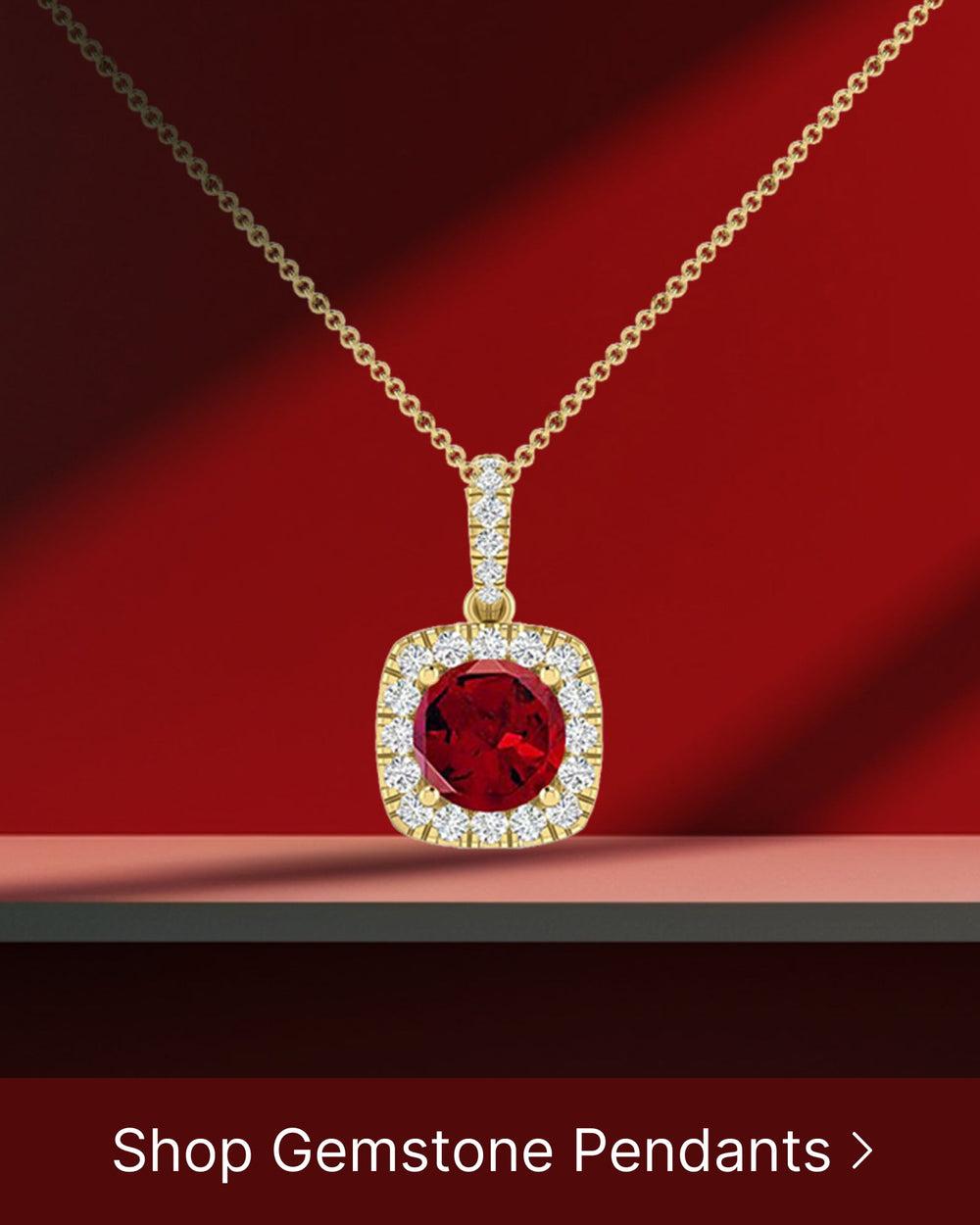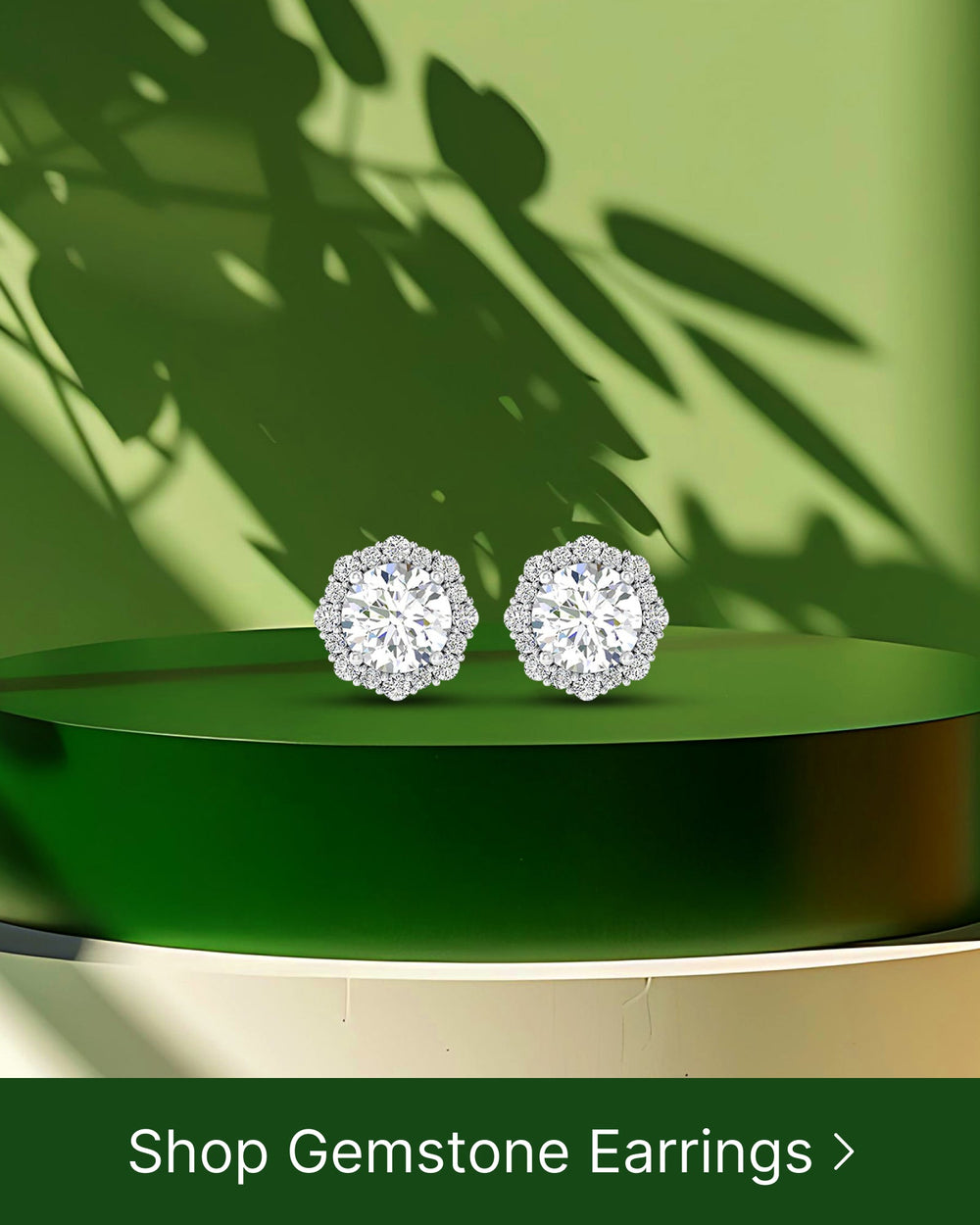In the world of fine jewelry, two popular choices for engagement rings, wedding bands, and other pieces are platinum and 18K white gold. These two metals offer a beautiful aesthetic and high-quality construction, but they also have some differences to consider. Let's take a closer look at platinum and 18K white gold to help you make an informed decision when selecting the perfect metal for your jewelry.
Understanding the Basics of Platinum and 18K White Gold
Before comparing these two metals, it's important to understand what they are.
When it comes to choosing the perfect metal for your jewelry, there are a few options that stand out from the rest. Two of the most popular choices are platinum and 18K white gold. These metals have their own unique characteristics and qualities that make them highly sought after in the world of jewelry.
What is Platinum?
Platinum is a rare and precious metal prized for its durability, purity, and white appearance. It is often considered the pinnacle of luxury and is a popular choice for engagement rings. Platinum is a naturally white metal, which means it does not require any plating or coating to maintain its color. This makes it an excellent choice for those who prefer a timeless and elegant look that will never fade or change over time.
One of the most remarkable qualities of platinum is its strength and durability. It is one of the strongest metals used in jewelry, making it highly resistant to scratches and damage. This means that your platinum jewelry will continue to shine and sparkle for years to come, even with everyday wear.
In addition to its durability, platinum is also known for its purity. It is a hypoallergenic metal, making it an excellent choice for those with sensitive skin. Platinum jewelry is unlikely to cause any skin irritations or allergic reactions, making it a safe and comfortable option for everyday wear.
Platinum's rarity is another factor that contributes to its desirability. It is estimated that the annual worldwide production of platinum is only a fraction of that of gold. This scarcity adds to its value and makes it a symbol of exclusivity and luxury.
What is 18K White Gold?
On the other hand, 18K white gold is an alloy made by mixing pure yellow gold with other metals such as silver, palladium, and nickel. This blend gives white gold its signature color. The term "18K" refers to the karatage of the gold used in the alloy, with 18K indicating that it contains 75% pure gold.
White gold has gained popularity in recent years due to its versatility and affordability. It offers a similar look to platinum at a lower price point, making it an attractive option for those who want the elegance of white metal without breaking the bank.
One advantage of white gold is its malleability, which allows jewelers to create intricate and detailed designs. This makes it a popular choice for engagement rings and other fine jewelry pieces that require delicate craftsmanship.
However, it's important to note that white gold jewelry may require periodic maintenance to maintain its lustrous appearance. Over time, the rhodium plating on white gold jewelry may wear off, revealing the slightly yellowish tint of the underlying gold. This can easily be remedied by having the jewelry re-plated, restoring its bright white color.
While white gold is generally considered hypoallergenic, some individuals may have sensitivities to the metals used in the alloy, such as nickel. If you have known allergies, it's important to choose a white gold alloy that is nickel-free to avoid any potential reactions.
Ultimately, the choice between platinum and 18K white gold comes down to personal preference and budget. Both metals offer their own unique advantages and beauty, making them excellent choices for creating stunning and timeless jewelry pieces.
The Physical Properties of Platinum and 18K White Gold
When it comes to comparing platinum and 18K white gold, their physical properties play a crucial role in determining their characteristics.
Platinum, a rare and precious metal, is known for its exceptional durability and resistance to tarnish. These properties make it an excellent choice for jewelry that will withstand everyday wear and tear. Additionally, platinum's density contributes to its strength and longevity, ensuring that your jewelry will last for generations to come.
On the other hand, 18K white gold, while also beautiful, is less durable than platinum. This is because it is mixed with other metals to achieve its white color. However, 18K white gold can be reinforced with a rhodium plating to enhance its strength and scratch resistance. The rhodium plating not only adds an extra layer of protection but also gives the jewelry a bright and shiny appearance.
Durability and Strength
Platinum's exceptional durability is due to its inherent properties. Its resistance to tarnish ensures that your platinum jewelry will maintain its luster and beauty over time. The dense nature of platinum adds to its strength, making it a reliable choice for jewelry that will be worn daily. Whether you're wearing a platinum engagement ring or a platinum necklace, you can rest assured that it will withstand the rigors of everyday life.
18K white gold, while not as durable as platinum, still offers a level of strength suitable for jewelry. The addition of other metals, such as palladium or silver, gives 18K white gold the necessary durability to withstand normal wear. However, it is important to note that 18K white gold may require occasional maintenance, such as re-plating with rhodium, to maintain its strength and appearance.
Color and Shine
One of the distinguishing features of platinum is its natural white color. This color is perfect for showcasing diamonds and other precious gemstones, allowing their brilliance to take center stage. Platinum's cool, silvery tone complements any skin tone, making it a versatile choice for jewelry. Whether you have fair skin or a darker complexion, platinum jewelry will enhance your natural beauty.
18K white gold, on the other hand, has a warm white color. While it may resemble platinum at first glance, over time, the yellowish hue of the underlying gold may become more apparent. However, this warm white color can also add a unique and subtle charm to your jewelry, giving it a distinct character.
Hypoallergenic Properties
If you have sensitive skin or metal allergies, platinum is an excellent choice for jewelry. It is hypoallergenic and safe for all skin types. Platinum's purity ensures that it does not contain any allergenic metals that could cause irritation or allergic reactions. This makes it an ideal option for individuals who have had allergic reactions to other metals in the past.
On the other hand, 18K white gold may contain alloys that can cause allergic reactions in some individuals. These alloys, such as nickel, can be problematic for those with metal sensitivities. If you have allergies, it's essential to discuss this with your jeweler to ensure that the 18K white gold jewelry you choose is free from allergenic metals or can be specially treated to minimize the risk of a reaction.
The Value of Platinum and 18K White Gold
When it comes to assessing the value of precious metals, several factors come into play.
Market Value
Platinum has traditionally held a higher market value than gold due to its rarity and desirability. It often commands a higher price tag than 18K white gold. However, market prices can fluctuate, so it's essential to consider current rates when making a purchase.
Resale Value
Both platinum and 18K white gold can hold their value over time. However, platinum often has a higher resale value due to its rarity and superior properties. If you're concerned about the long-term investment potential of your jewelry, platinum may be the better choice.
The Maintenance of Platinum and 18K White Gold
Proper care and maintenance are essential to keep your jewelry looking its best.
Cleaning and Care
To clean platinum, a simple soak in warm soapy water and gentle brushing with a soft toothbrush is usually sufficient. 18K white gold can be cleaned in the same way, but additional care must be taken to protect the rhodium plating.
Long-term Maintenance
Over time, the rhodium plating on 18K white gold may wear off, causing the yellowish tone of the underlying gold to become more visible. Re-plating the jewelry periodically can maintain its white appearance. Platinum, on the other hand, retains its color and luster naturally, requiring minimal long-term maintenance.
Making the Choice: Platinum or 18K White Gold?
When deciding between platinum and 18K white gold, several factors should be taken into account.
Factors to Consider
Consider your lifestyle and how you plan to wear your jewelry. If you lead an active lifestyle or work with your hands, platinum's durability may be a better choice. If you prefer a warmer white color and are willing to give your jewelry some extra care, 18K white gold may be a suitable option.
Personal Preferences and Lifestyle
Your personal taste and style should be the primary consideration. Do you prefer the bright white color of platinum or the warmer tone of 18K white gold? Try on both options and see which one speaks to you.
Budget Considerations
Lastly, consider your budget. Platinum's higher market value means it often comes with a higher price tag than 18K white gold. However, if superior durability, hypoallergenic properties, and long-term value retention are important to you, the investment may be worth it.
Ultimately, the choice between platinum and 18K white gold comes down to personal preference, lifestyle, and budget. Both metals offer their own unique characteristics and can create stunning jewelry pieces that will be cherished for a lifetime. Take your time, explore your options, and find the perfect metal that suits your individual style and needs.






